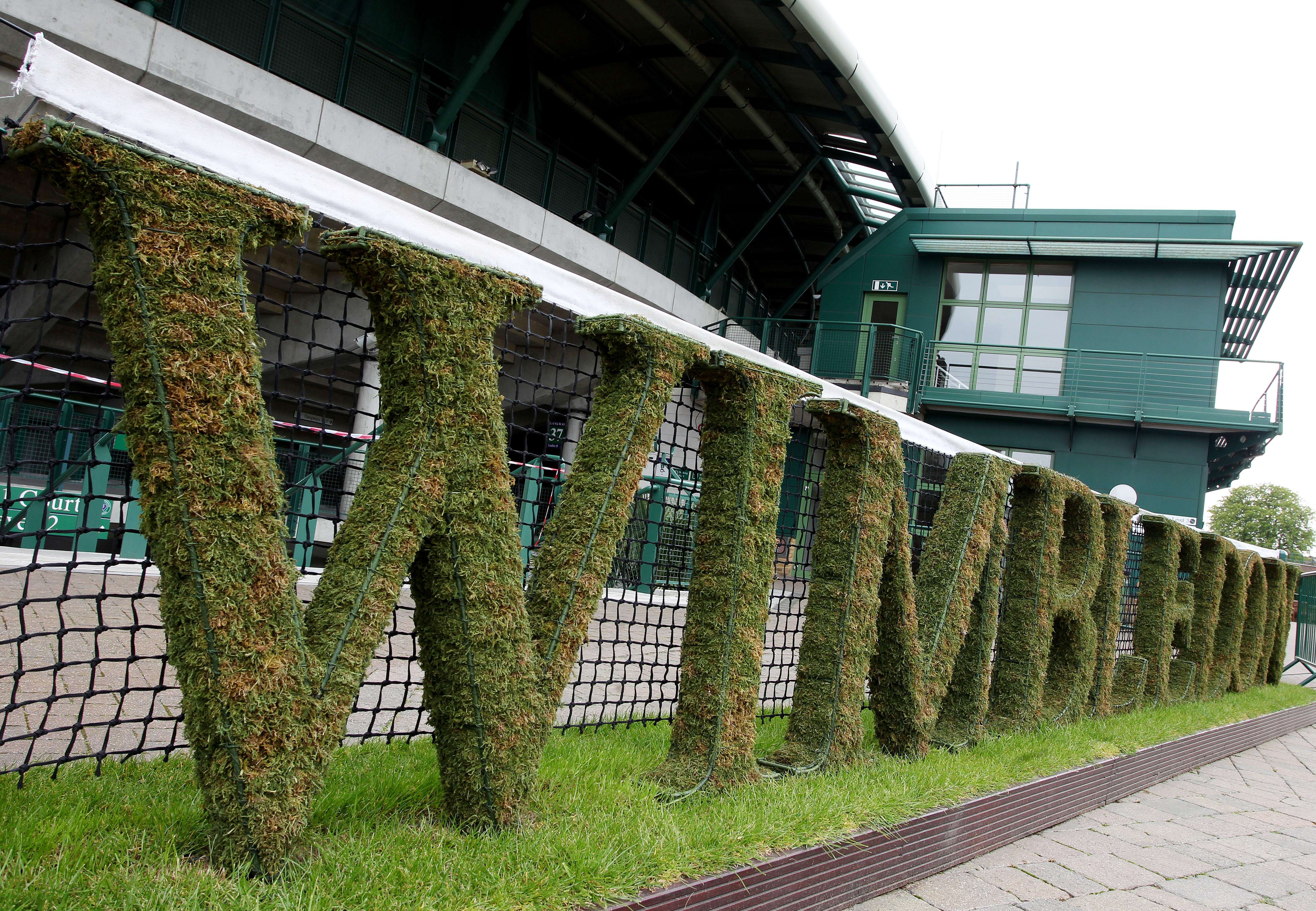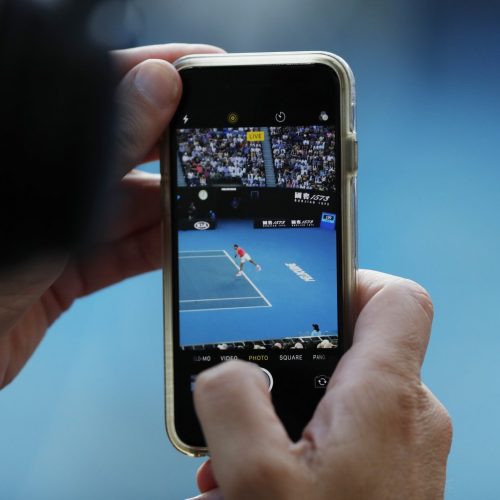Interview: Insights into digital innovation the Wimbledon way
With all the activity that Wimbledon currently has going on behind the scenes, including its revamped website, not to mention the planning of the tournament that kicks off next week. It was a surprise that Wimbledon’s Head of Digital and Content Alexandra Willis was once again able to grant us an interview and walk us through all of their new methods of bringing Wimbledon to the world.
A totally revamped website, new videos , new video formats and even the use of drones. You name it, Wimbledon have sought to use it to build on their Social Command Centre and provide fans with a completely immersive experience. Seemingly victims of their own success, Alexandra gave us insight into not only how they’re going to keep up with the heavy expectation of providing a flawless digital experience of one of the world’s premier sporting events but keep the experience as uniquely Wimbledon as possible.
With the sheer amount of fascinating goings-on at SW19, where better to start with then how they were going to build on IBM Social Command Centre that Wimbledon released last year.
One thing we discovered last year about the social command centre is that it was great if you were able to spend a lot of time looking at it and assessing all the insights coming out of it. But we wanted it to be pushed when something interesting happened or a threshold breached.
We’ve worked with IBM to put in an alerting system that, when specific things happen, we get alerted to it and then we push it out on social media – for example Roger Federer hits his 1000th ace ever at Wimbledon or Murray completes his 120th win at Wimbledon.
The redesigned Wimbledon.com that has already launched is a stunning, user-friendly experience that really immerses users in the feel of the event and Alexandra says that this was the primary aim of the redesign.
What’s interesting about the new homepage is that it bucks the trend of web today which is to have very long scrolling web pages with revolving content on them. We’ve also got a navigation bar on the bottom which is not common in website design.
It’s because we still wanted to have an unmistakably Wimbledon experience when you hit the homepage. The site isn’t trying to sell tickets or promote commercial aspects. For us it’s all about a genuine Wimbledon experience and giving people the access to content their most interested in. We pay attention to what users think and what other people are doing but we also stick very true to our own values and what we believe works for us and our fans.
With their IBM Social Command Centre, a hugely popular feature of last year’s tournament, and the extremely reliable and well designed Wimbledon.com – this year they’ve put a particularly large emphasis on trying to add context to the content that is being rolled out on their platforms. Thus making the event easier for people to follow and pick-up on trending topics. Alexandra says that site redesign was very much about improving the accessibility of information.
The redesign of the layout was to include a lot more relevant information, whether that was match highlights, statistics, head to heads, infographics or data visualisations, but within the content rather than putting it into silos or forcing the user to go looking for it.
What we’ve tried to establish is a much cleaner design and very much a ‘less is more’ approach. So rather than just having a list of 20 different items, we are limiting it to 5 and saying if you read these you will find more about Jelena Jankovic or whichever player you’re interested in.
With the rapid rise of social media, Wimbledon has been very active in attempting to improve their methods of utilising social media in order to not only increase their audience but increase the audience engagement and content interaction. New initiatives on top of the Hill vs World social media campaigns from last year include making ‘the Hill’ more a part of the digital experience as well as a ‘take your seat’ campaign.
This campaign brings in photos uploaded to Google +, Facebook or Twitter accompanied with #takeyourseat and helps to form a digital mosaic which will live on Wimbledon.com. Alexandra says that by utilising platforms like Facebook, Twitter, Google +, Snapchat and Instagram Wimbledon will not only attract more fans but get users more engaged in what is going on at the tournament.
We see this area as being our gateway to a younger generation. Our broadcast audience is inevitably going to age so whether someone’s first experience of Wimbledon is because that friend Whatsapped them a photo or they saw a picture we posted on snapchat or they happened to get sent a video we put on YouTube or on Facebook – we want them to have an experience that really reflects Wimbledon. But most importantly, we want them to come back for more, have visions of going to Wimbledon one day, potentially watching it on tv and start to become an advocate of Wimbledon.
Building on their video content from 2014 and their relationship with Grabyo, Wimbledon has not only worked on creating a lot more real time video content but included a very unique video centred on the complex.
The video we did with the drone was using a 360 degree camera on the drone which is available on YouTube and the Wimbledon iPad app. It allows people to travel over the ground and look around and get that sense of place. It’s very unique because you the grounds are completely empty.
On top of that experience, we’re constantly working on making Wimbledon.com the go-to place for insight and exclusive content about Wimbledon – catching a lot more real time video content and giving people the real sense of what Wimbledon is about by creating a lot more atmospheric videos, time lapses of the grounds etc.
With the backing of a seemingly timeless event and staff on the pulse of everything digital, you could be forgiven for thinking that Wimbledon doesn’t have any issues. However an event like this doesn’t reach the much-envied heights without really pushing the boundaries of digital innovation and Alexandra suggested that it is often hard to push those boundaries while also maintaining the features that Wimbledon is essentially built on.
There are two main challenges that we’re faced with. One is the sense of expectation from our users and fans is constantly growing and it’s about treading the fine line between maintaining quality and keeping pace with innovation.
The other is really an evolving challenge and that is showing off all the different parts of Wimbledon and the different sides of the event to a global audience. We forget that most people will watch us on TV and while we have a global tv audience of over a billion people, all they see is centre court and they’ll form an impression on Wimbledon that way. We want to show them the hill, the crowds, the queues and the people on the outside courts who are sitting 5 feet away from the best tennis players in the world. That’s what we’re really trying to bring to life with our digital and our social platforms.
So, as the interview comes to an end, it’s always good to see what’s next for one of the most digitally innovative sporting events on the globe. Thankfully, Alexandra doesn’t hold Wimbledon’s cards too close to her chest and she’s willing to give us a slight insight into what Wimbledon might up too in the not-to-distant future.
We’re determined to continue to develop the content, to keep pushing what we’re doing to offer stuff up to fans that they’ll find interesting and engaging while maintain the quality and sense of place. But our additional strategy has been founded on being the next best thing to being here. It’s not excluding the audience on site but it is very much about the audience who isn’t lucky enough to be here.
I think something we will be evolving over the next few years will be more about what the fan experiences on-site and translating that digitally. We’re also trialling iBeacons which are triggered when fans with the Wimbledon app walk into certain positions in the complex and are sent a greeting message or something similar.
About author
You might also like
The seven essentials for achieving successful sports branding
By Daniela McVicker When it comes to sports, great branding is a must. Your brand influences how people see your company or team. It helps you to forge connections with
Live Chat: A New Social Experience in Sports
Article written by John S. Kim, CEO and co-founder of global API company SendBird Social media rose to prominence throughout the world due to its potential for connection. Social channels provided the
Snack Media’s Football Content Campaign’s Review: February
By Mike Constanti This series, in partnership with Snack Media, will look at the best football campaigns from advertising to social media on a monthly basis, as Digital Sport evaluates how









